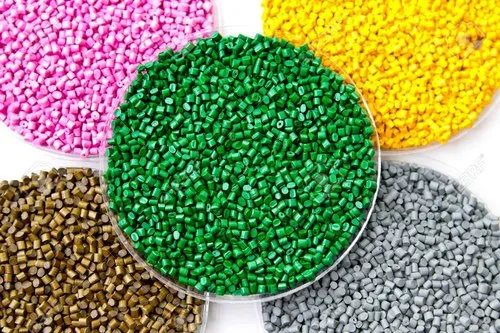Recycled granules are produced by melting and reprocessing plastic waste materials. These can include High-Density Polyethylene (HDPE), Polypropylene (PP), and other suitable polymers. For toys, the material must meet stringent safety and performance requirements.

Key Properties of Recycled Granules for Toys
- Safety and Non-Toxicity:
- Must be free from harmful substances such as lead, phthalates, or BPA.
- Certified for compliance with toy safety standards like EN 71 (Europe) or ASTM F963 (USA).
- Mechanical Strength:
- Sufficient durability to withstand impacts, bending, and rough handling by children.
- Smooth Surface Finish:
- Granules must process into materials that can achieve a smooth and aesthetically pleasing surface after molding.
- Colorability:
- Should readily accept pigments or dyes for bright and consistent toy colors.
- Environmental Compliance:
- Must align with eco-friendly manufacturing goals, reducing carbon footprint.
Types of Recycled Granules Suitable for Toys
- Recycled HDPE (High-Density Polyethylene):
- Used for durable toys like building blocks and outdoor play equipment.
- Resistant to moisture and impacts.
- Recycled PP (Polypropylene):
- Lightweight and flexible, suitable for less rigid toy components.
- Common in injection-molded toys.
- Recycled ABS (Acrylonitrile Butadiene Styrene):
- Offers excellent toughness and a smooth finish.
- Widely used for complex toys like action figures and LEGO-like blocks.
- Recycled PET (Polyethylene Terephthalate):
- Used in transparent or semi-transparent toys.
- Offers excellent clarity and strength.
Advantages of Recycled Granules for Toys
- Cost-Effectiveness:
- Lower raw material costs compared to virgin plastics.
- Sustainability:
- Reduces plastic waste in landfills and oceans.
- Aligns with eco-conscious consumer preferences.
- Availability:
- Accessible in a variety of grades and compositions to meet diverse toy requirements.
- Versatility:
- Compatible with most manufacturing methods, including injection molding and blow molding.
Challenges and Solutions
- Consistency in Quality:
- Challenge: Variability in recycled granule quality may affect toy performance.
- Solution: Use post-industrial recycled materials or partner with reliable recycling suppliers offering high-grade granules.
- Regulatory Compliance:
- Challenge: Recycled plastics may contain residual contaminants.
- Solution: Ensure thorough testing and certification against safety standards.
- Processing Challenges:
- Challenge: Some recycled plastics may degrade or exhibit poor flow properties.
- Solution: Use additives like stabilizers, compatibilizers, or flow enhancers during compounding.
Regulatory Standards for Toys
Recycled granules used in toys must comply with:
- EN 71 (Europe):
- Covers mechanical, physical, chemical, and flammability safety requirements for toys.
- ASTM F963 (USA):
- Ensures toy safety through chemical, mechanical, and thermal testing.
- ISO 8124 (Global):
- Specifies safety aspects for toys including material safety.
- RoHS and REACH:
- Restrict hazardous substances in recycled plastics.
Processing Recycled Granules for Toys
- Material Preparation:
- Ensure granules are clean, dry, and homogenized.
- Use additional filtering during the melting stage to remove impurities.
- Injection Molding:
- Recycled granules must have consistent melt flow index (MFI) to avoid defects.
- Fine-tune processing parameters like temperature and pressure to achieve uniform results.
- Additives:
- Include colorants, UV stabilizers, or impact modifiers for improved aesthetics and durability.
Popular Applications in Toys
- Building Blocks: Durable and precision-molded for consistent fit.
- Outdoor Play Equipment: Weather-resistant toys like slides and swings.
- Small Action Figures: High-detail molding using recycled ABS or HDPE.
- Educational Toys: Blocks and puzzles from lightweight, non-toxic materials.
Conclusion Recycled granule for toys
hdpe granule for injection And Recycled granules are produced by melting and reprocessing plastic waste materials. These can include High-Density Polyethylene (HDPE), Polypropylene (PP), and other suitable polymers. For toys, the material must meet stringent safety and performance requirements.

